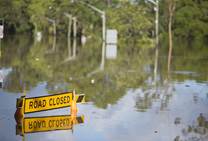In the post-pandemic world of hyper-connectedness and explosive data growth — along with the global realignment of workforces and a ‘new work order’ — businesses must “digitise or fail,” according to Tata Communications’, Amitabh Sarkar, vice president & head of Asia Pacific and Japan – enterprise.
In fact, Amitabh believes the rapid rise of hyper-connected ecosystems — a key enabler of secure, connected, digital experiences — is changing the face of business, creating resilience and efficiency across the entire value chain.

The enterprise ecosystem itself has become more complex as the value chains are no longer linear anymore and the number of partners involved in delivering value has increased, from financial services, media and manufacturing, to sports and supply chain logistics.
Take an example of an ecosystem of one of Tata Communications’ large customers in Asia Pacific — a global mobility operator with more than USD$20 billion in revenue, which operates in the space of ridesharing, food and grocery delivery, autonomous vehicle investments and shared bikes. In their ecosystem, they have more than 600 million active users, over 10 million registered drivers, handling over 25 million rides a day and they operate in over 4000 cities across 16 countries.
This is an incredible level of complexity and scale. The reality is that we have always been operating in a connected environment. However, with this focus on experience and increased complexity, just being connected is no longer enough.
According to Amitabh, this is why businesses must move to hyperconnected ecosystems.
Hyperconnectivity means:
- Always connected (always on) and in real time
- Across all channels (omnichannel)
- With exchange of not just data but also intelligence
Tata Communications brings this to life for the global mobility operator, to deliver an enhanced customer and partner experience through its Customer Interaction Platform, TATA COMMUNICATIONS DIGO.
The platform helps to integrate multichannel conversational capability to the app, provides ready to integrate workflows reducing efforts and improving time to market, transforms customer experience through conversational AI and commerce.
Today, Tata Communications is helping their customers and delivery partners across many countries connect securely and anonymously through its platform and is helping them reduce the overall cost of ownership by 25-30 percent, he said.
“Enterprises are quickly adapting to this evolving ‘new work environment’ for greater agility, collaboration and growth — it was the mantra for 2022 and a major trend in 2023. Today, technology has scaled up globally, and the rules of the ‘new normal’ have become simple: digitise or fall behind." This is the trend that will shape our future and see us move into the world of hyper-connected ecosystems," Amitabh told iTnews.
Speaking with customers across industries and geographies, Tata is looking at five core priorities: growth, innovation, agility, productivity and managing risks.
Hyperconnected ecosystems are a route to delivering on these priorities.
Looking at business growth as an example, a hyperconnected ecosystem helps in driving growth in many ways:
- Geographic expansion
- New Channels
- New business models
According to Amitabh, a hyperconnected ecosystem can support all of these.
A leading health insurance provider is driving growth through a new business model. When they entered Asia, they decided to adopt a different strategy and build an ehealth platform by connecting their ecosystem partners - doctors, clinics, labs, nurses, and patients.
Today, this organisation is connecting over 3500 partners across 2000 cities and serving more than 3.5 million patients. This is another example of how Tata Communications enabled a hyperconnected ecosystem in the healthcare domain.
The data explosion
“Each enterprise — whether it's a bank, a manufacturer, an airline, or a mining company — they're all solving different problems. But the one underlying challenge that each one of these enterprises face is the explosion of data and having to solve the data deluge.”
By 2025, IDC predicts that the total amount of digital data created worldwide will rise to 163 zettabytes, ballooning by the growing number of devices and sensors.
Certainly, this exponential growth leaves enterprises with many challenges. But companies can start to overcome some of these pain points by embracing hyper automation. “This means automation at scale, agile at scale, which would help them solve many problems.
“But trying to bring automation at scale, being agile at scale, this is not natural for a lot of legacy enterprises, and so, this is a real blocker of change, and I see many enterprises wanting to solve this dilemma.”
Amitabh points to several “blockers” to digital transformation in a hyper-connected world given there are so many connections across many different layers, including a host of relationship struggles that straddle many different areas within the enterprise (from customer experience, to marketing, to digital automation, to employee experience), and that all needs solving.
“What we bring to the table — from an enterprise standpoint — is building a digital fabric, which is secure and intelligent, on top of which our customers build their applications and drive innovation. Think of it like a platform- you can plug in the connected workforce, you can bolt on the connected solution, connected partners or connected things and that platform becomes a seat of innovation & business transformation," he said.
“In a hyper-connected ecosystem, partners, suppliers, customers, and employees can all onboard their ideas, their projects, and their thinking onto the digital fabric,” boosting productivity and efficiency with enhanced ability to communicate, engage and collaborate anytime, anywhere across any channel.
In line with offering connected solutions for enterprises and delivering a superior customer experience, Tata Communications has been closely working with several airlines to advance their journey of continually reimagining the flying experience across their entire ecosystem of passengers, aircraft systems, pilots, crew members and other touch points that require a mobile connection.
Tata Communications’ MOVE provides pervasive, secured and cost effective mobile connectivity across 200 countries which gives pilots, cabin crew and ground staff with an updated information on electronic flight bags, passenger lists, flight plans and inventories, resulting in improved maintenance and turnaround times.
Another area of focus is on improving productivity and customer experience in the new world of hybrid. Enhancing employee experience through unified communications or transforming customer interactions and experience by modernising contact centres which can potentially deliver benefits in the range of 30-40 percent reduction in operating costs, increase in customer responsiveness and digital channel operations or growth 10-15 percent growth in customer satisfaction.
‘Strong appetite’ in Australia
Like other parts of the world, Australia is a hotbed of opportunity for the tools and technologies that empower a hyper-connected ecosystem.
In fact, “there’s a strong appetite in Australia to build a an intelligent, secured and trusted digital fabric which empowers enterprises to leverage hyperconnected ecosystems to co-create, innovate and deliver step change in business outcome,” Amitabh said.
“Australia is a mature market, if you look at it from an Asia Pacific perspective; it's big. It's relatively small in terms of the number of people, but the propensity to consume technology and consume services is massive.
“Users today are working outside the office, outside the data centre, and more so than they did before Covid-19. So that's the hybrid world — and that presents an interesting opportunity or interesting problem to solve."
With workloads moving to cloud, employees working in the hybrid set up, ever increasing threat of cyber-attacks, Australian enterprises are expected to invest heavily in cloud based security and advanced threat detection and response systems.
Banking and finance is one sector that exemplifies digital transformation as requiring both an operational and a cultural shift that aims to integrate digital technology across all areas of the bank, optimising operations and delivering value to its customers.
The expectation of banking customers in Australia are changing rapidly. Providing differentiated and seamless customer experience anytime, anywhere in this competitive industry is a must to retain and grow market share.
“Banks are asking, ‘How can I automate and digitise processes across all the domains, whether it's in lending, mortgage, payments or wealth management? One of the drivers for digitisation and automation within banks is to reduce cost-to-income ratio; achieved by modernising the legacy IT and network systems,” said Amitabh.
According to Amitabh, companies across industries need to fundamentally get the foundation of building ‘digital fabric’ right – intelligent, secure and trusted. Any transformation in the absence of a sound digital fabric will fall short on delivering the desired business outcome across cost, revenue and customer advocacy.
“AI at scale, automation at scale, delivered through a fabric, which is agile in nature is the common denominator across all sectors from banking to manufacturing to mining to transport — and in the software-defined world, which we’re all living in, this is the trend to watch as we move further into 2023 and beyond.”


.png&h=140&w=231&c=1&s=0)














.png&h=271&w=480&c=1&s=1)









